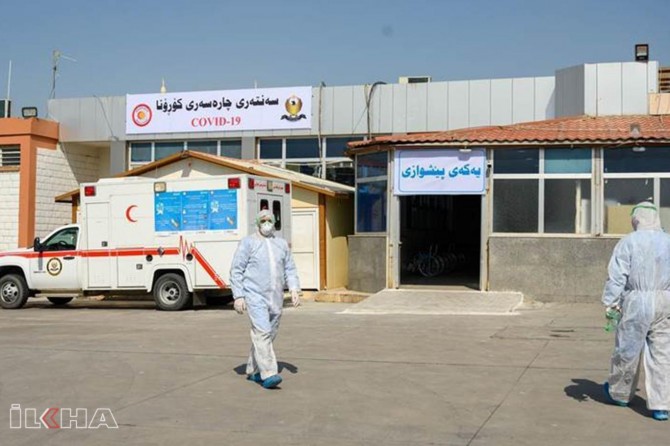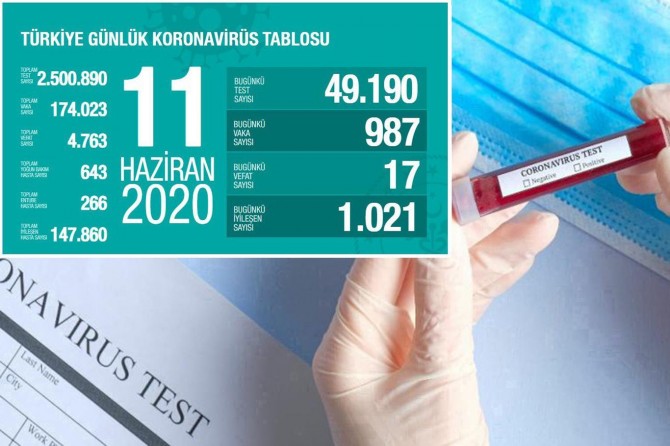
More than 1.1 million babies were born in Turkey last year: TurkStat
According to the Turkish Statistical Institute (TurkStat), the number of live births was 1 million 112 thousand 859 in 2020.
51.3% of live births were boys and 48.7% of live births were girls, the institute said in a statement on Tuesday.
Total fertility rate was 1.76 children
Total fertility rate means that the average number of live births that a woman would have under the assumption that she survived to the end of her reproductive life which is 15-49 age group and had a child according to a given age specific fertility rate.
While the total fertility rate was 2.38 children in 2001, this rate was 1.76 children in 2020. It means that a woman gave approximately 1.76 live births during her reproductive life in 2020. This showed that fertility remained below the population's replacement level of 2.10.
The highest total fertility rate was in Şanlıurfa with 3.71 children
In 2020 the province having the highest total fertility rate was Şanlıurfa with 3.71 children. Şanlıurfa was followed by Şırnak with 3.22 children, Ağrı and Siirt with 2.88 children. The provinces having the lowest total fertility rate was Karabük with 1.29 children. Karabük was followed by Zonguldak and Kütahya with 1.31 children.
Total fertility rate was higher than that of the EU member countries
It was seen that total fertility rate of Turkey was higher than the total fertility rates of 27 European Union (EU) member countries. When the total fertility rates of 27 European Union member countries were analyzed, the country having the highest total fertility rate was France with 1.86 children and the country having the lowest total fertility rate was Malta with 1.14 children in 2019.
Crude birth rate was 13.3 per thousand
Crude birth rate means that the number of live births per thousand population. While the crude birth rate was 20.3 per thousand in 2001, this rate was 13.3 per thousand in 2020. It means that while the number of live births was 20.3 per thousand population in 2001, the number of live births was 13.3 per thousand population in 2020.
The highest crude birth rate was in Şanlıurfa with 28.3 per thousand
When the crude birth rate was examined by provinces, in 2020 the province having the highest crude birth rate was Şanlıurfa with 28.3 per thousand. Şanlıurfa was followed by Şırnak with 25.2 per thousand, Siirt and Ağrı with 23.0 per thousand. The province having the lowest crude birth rate was Zonguldak with 8.5 per thousand. Zonguldak was followed by Edirne with 8.8 per thousand, Kastamonu, Karabük and Giresun with 8.9 per thousand.
Crude birth rate was higher than that of the EU member countries
It was seen that crude birth rate of Turkey was higher than the crude birth rates of 27 European Union member countries. When the crude birth rates of 27 European Union member countries were analyzed, the country having the highest crude birth rate was Ireland with 12.0 per thousand and the country having the lowest crude birth rate was Italy with 7.0 per thousand in 2019.
The highest age specific fertility rate was in 25-29 age group
Age specific fertility rate means that the average number of live births per thousand women in certain age group.
When the fertility rate was examined by age group, it was seen that while the age specific fertility rate was in 20-24 age group with 144 per thousand in 2001, this rate was in 25-29 age group with 115 per thousand in 2020. This showed that fertility occurred at a later age of the woman.
Adolescent fertility rate decreased
Adolescent fertility rate means that the average number of live births per thousand women in 15-19 age group.
While the adolescent fertility rate was 49 per thousand in 2001, this rate decreased to 15 per thousand in 2020. In other words, the number of live births was 15 per thousand women in 15-19 age group in 2020.
The average adolescent fertility rate for EU member countries was 9 per thousand
When the adolescent fertility rates of 27 European Union member countries were analyzed, the country having the highest adolescent fertility rate was Bulgaria with 39 per thousand and the country having the lowest adolescent fertility rate was Netherlands and Denmark with 2 per thousand in 2019. Turkey having adolescent fertility rate with 17 per thousand was higher than European Union average with 8 European Union member countries.
Mean age of the mothers giving birth was 29.0
While the mean age of the mothers giving birth was 26.7 in 2001, it was 29.0 in 2020. Mean age of mother at birth of first child in 2020 was 26.5.
The highest mean age of mother at birth of first child was in İstanbul with 28.1
When the mean age of mother at birth of first child was examined by provinces, in 2020 the province having the highest mean age of mother at birth of first child was İstanbul with 28.1. İstanbul was followed by İzmir, Rize and Muğla with the age of 27.8, Trabzon and Eskişehir with the age of 27.7. The province having the lowest mean age of mother at birth of first child was Ağrı with 23.3. Ağrı was followed by Muş with the age of 23.6, Şanlıurfa and Bitlis with the age of 24.2.
2.9% of births were multiple births
While 2.9% of births were multiple births in 2020, 96.8% of these births were twins, 3.1% of them were triplets and 0.1% of them were quadruplets and more.
36.9% of births were mother's first birth
When births by birth order were analyzed, it was seen that 36.9% of births were first, 31.7% were second, 17.9% were third, 12.6% were fourth and above in 2020.
Kaynak:![]()









Türkçe karakter kullanılmayan ve büyük harflerle yazılmış yorumlar onaylanmamaktadır.